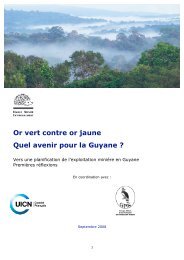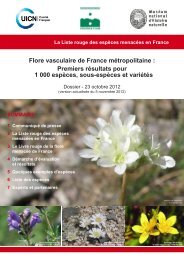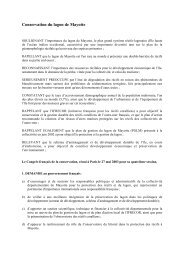Establishing Marine Protected Area Networks - Georgia Strait Alliance
Establishing Marine Protected Area Networks - Georgia Strait Alliance
Establishing Marine Protected Area Networks - Georgia Strait Alliance
Create successful ePaper yourself
Turn your PDF publications into a flip-book with our unique Google optimized e-Paper software.
W<br />
HAT<br />
ARE THE ECOLOGICAL<br />
DESIGN CRITERIA FOR MPA<br />
NETWORKS?<br />
These eight criteria can help identify the ecological considerations that lie at<br />
the heart of designing MPA networks:<br />
Representativeness. MPA networks should represent the range of marine and<br />
coastal biological diversity (from genes to ecosystems) and the associated<br />
physical environment within the given area.<br />
Replication. All habitats in each region should be replicated within the network<br />
and distributed spatially throughout the network.<br />
Viability. MPA networks should incorporate selfsustaining,<br />
geographically dispersed component sites<br />
of sufficient extent to ensure population persistence<br />
through natural cycles of variation.These sites should<br />
be independent (as far as possible) of activities in<br />
surrounding areas.<br />
Precautionary design. Network designers should<br />
base their decisions on the best information currently<br />
available, rather than delaying the process to await<br />
more and better information.Where information<br />
is limited, designers should adopt a precautionary<br />
approach.<br />
Permanence. Network design must provide longterm<br />
protection to effectively conserve diversity<br />
and replenish resources.<br />
Maximum connectivity. MPA network design should<br />
seek to maximize and enhance the linkages among<br />
individual MPAs, groups of MPAs within a given ecoregion,<br />
or networks in the same and/or different<br />
regions.<br />
Resilience. MPA networks must be designed to<br />
maintain ecosystems’ natural states and to absorb<br />
shocks, particularly in the face of large-scale and<br />
long-term changes (such as climate change).<br />
Size and shape. Individual MPA units within the<br />
network must be of sufficient size to minimize<br />
adverse impacts from activities outside the protected<br />
area (avoiding what is called the “edge effect”).<br />
The scale of benefits derived from individual MPAs<br />
will depend on their location, design, size, and<br />
relationship to other forms of management. MPA<br />
networks magnify the benefits of individual sites<br />
and protect the large-scale processes that maintain<br />
healthy populations, such as connectivity, gene flow<br />
and genetic variation.<br />
4 | <strong>Establishing</strong> <strong>Marine</strong> <strong>Protected</strong> <strong>Area</strong> <strong>Networks</strong> <strong>Establishing</strong> <strong>Marine</strong> <strong>Protected</strong> <strong>Area</strong> <strong>Networks</strong> | 5
















